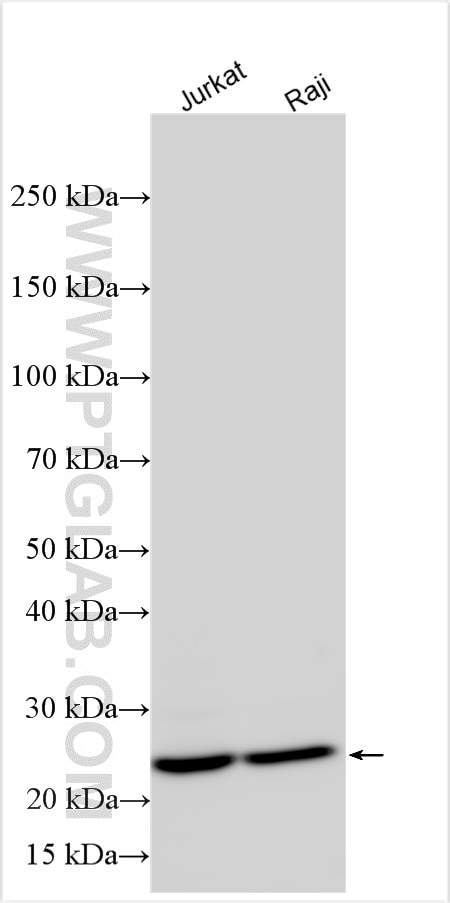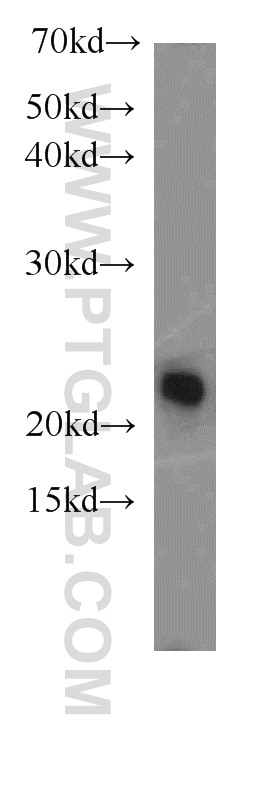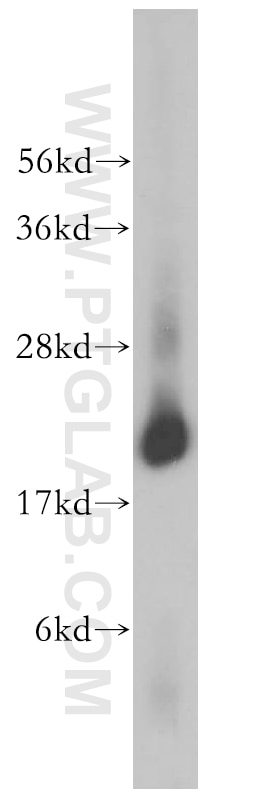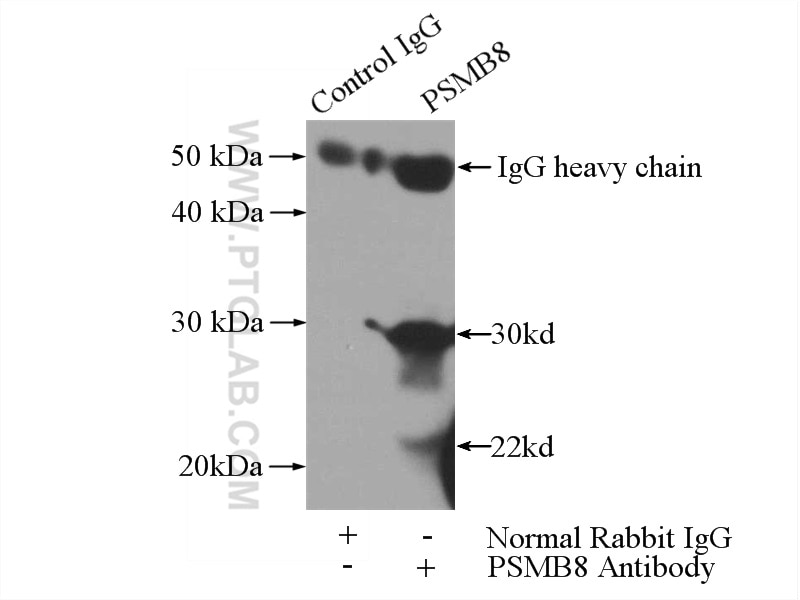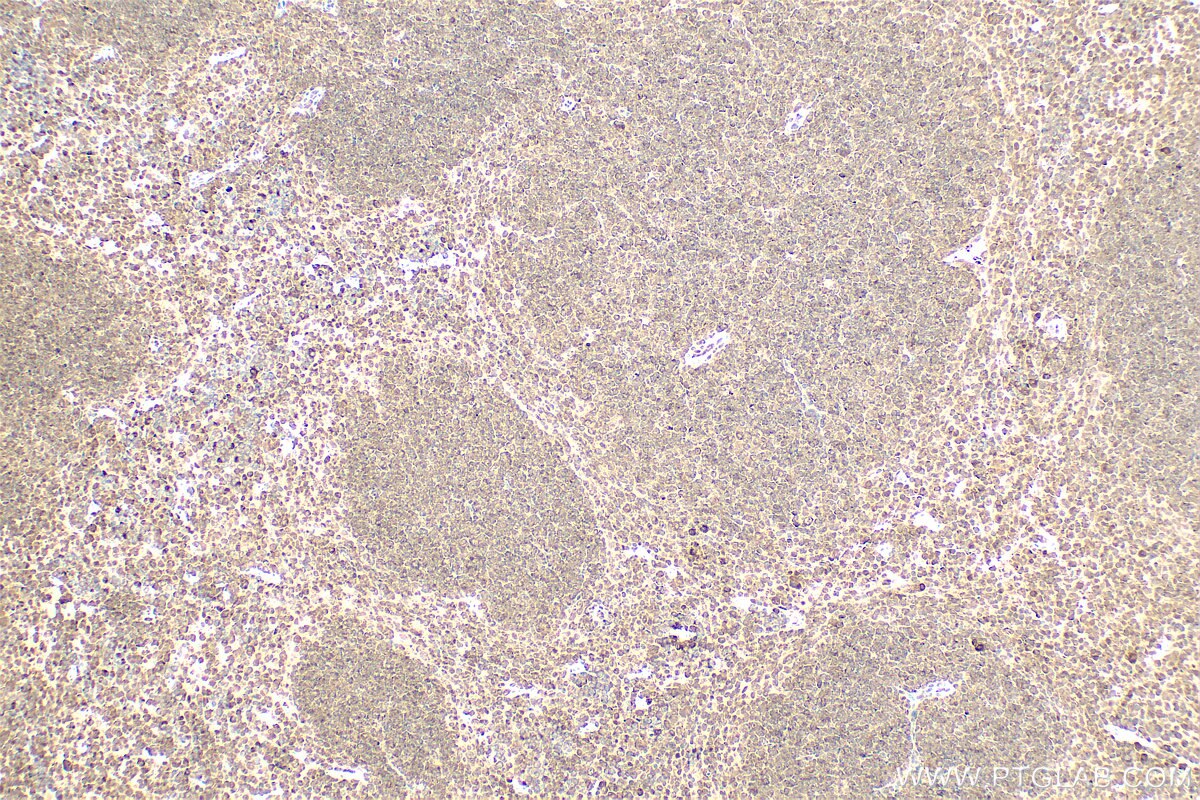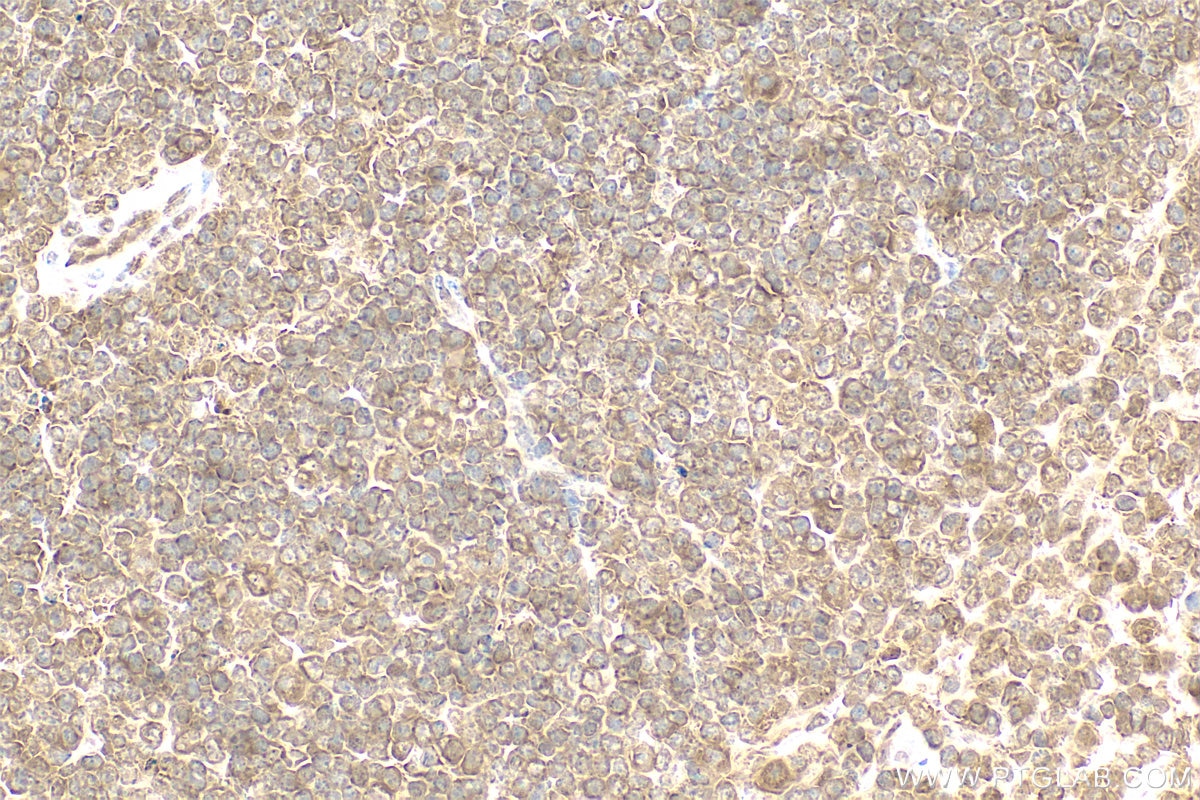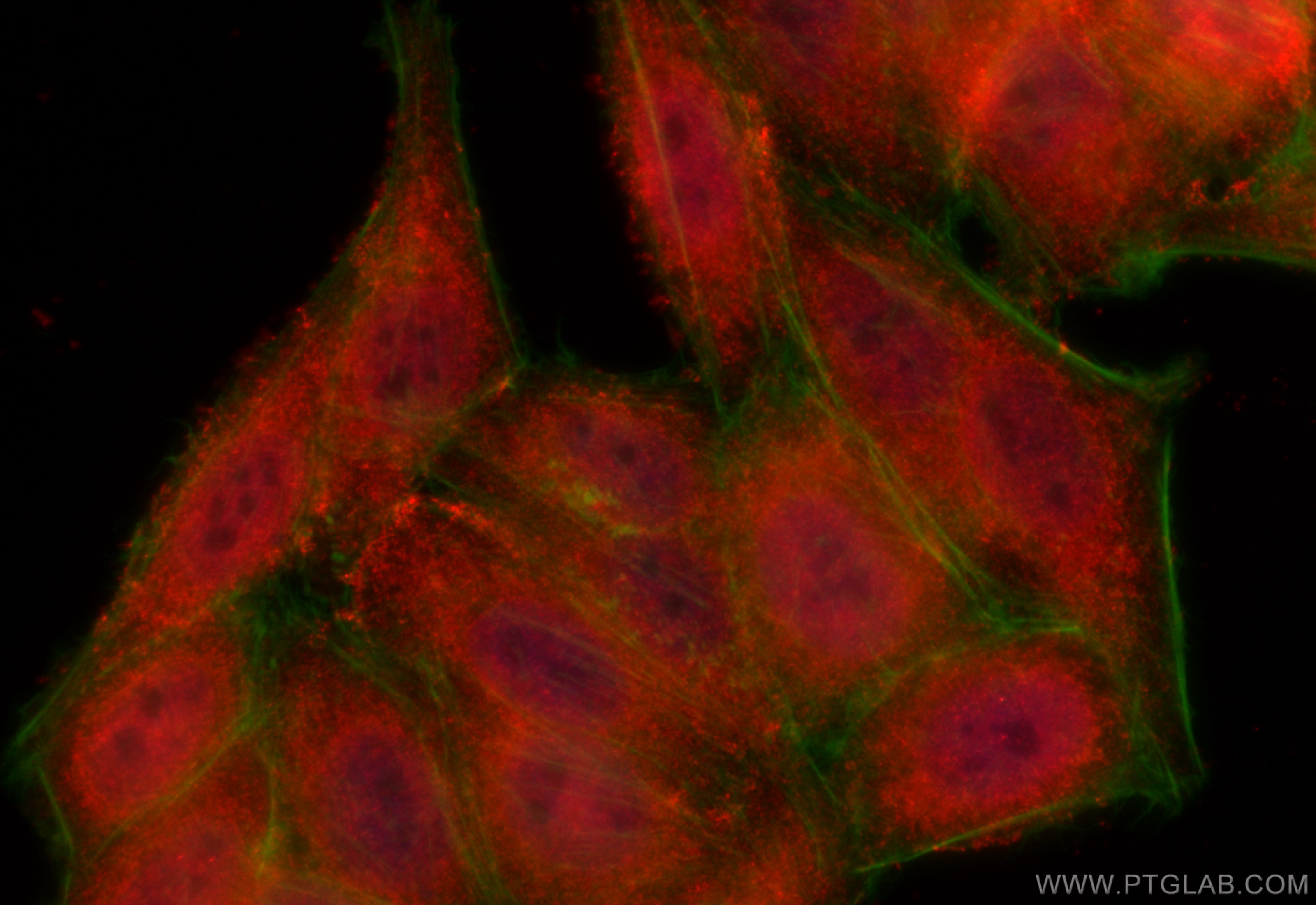Tested Applications
| Positive WB detected in | Jurkat cells, mouse kidney tissue, human kidney tissue |
| Positive IP detected in | Raji cells |
| Positive IHC detected in | mouse spleen tissue Note: suggested antigen retrieval with TE buffer pH 9.0; (*) Alternatively, antigen retrieval may be performed with citrate buffer pH 6.0 |
| Positive IF/ICC detected in | HepG2 cells |
Recommended dilution
| Application | Dilution |
|---|---|
| Western Blot (WB) | WB : 1:5000-1:50000 |
| Immunoprecipitation (IP) | IP : 0.5-4.0 ug for 1.0-3.0 mg of total protein lysate |
| Immunohistochemistry (IHC) | IHC : 1:50-1:500 |
| Immunofluorescence (IF)/ICC | IF/ICC : 1:200-1:800 |
| It is recommended that this reagent should be titrated in each testing system to obtain optimal results. | |
| Sample-dependent, Check data in validation data gallery. | |
Published Applications
| KD/KO | See 1 publications below |
| WB | See 11 publications below |
| IHC | See 5 publications below |
| IF | See 1 publications below |
Product Information
14859-1-AP targets PSMB8 in WB, IHC, IF/ICC, IP, ELISA applications and shows reactivity with human, mouse samples.
| Tested Reactivity | human, mouse |
| Cited Reactivity | human, mouse |
| Host / Isotype | Rabbit / IgG |
| Class | Polyclonal |
| Type | Antibody |
| Immunogen |
CatNo: Ag6660 Product name: Recombinant human PSMB8 protein Source: e coli.-derived, PGEX-4T Tag: GST Domain: 1-272 aa of BC001114 Sequence: MLIGTPTPRDTTPSSWLTSSLLVEAAPLDDTTLPTPVSSGCPGLEPTEFFQSLGGDGERNVQIEMAHGTTTLAFKFQHGVIAAVDSRASAGSYISALRVNKVIEINPYLLGTMSGCAADCQYWERLLAKECRLYYLRNGERISVSAASKLLSNMMCQYRGMGLSMGSMICGWDKKGPGLYYVDEHGTRLSGNMFSTGSGNTYAYGVMDSGYRPNLSPEEAYDLGRRAIAYATHRDSYSGGVVNMYHMKEDGWVKVESTDVSDLLHQYREANQ Predict reactive species |
| Full Name | proteasome (prosome, macropain) subunit, beta type, 8 (large multifunctional peptidase 7) |
| Calculated Molecular Weight | 30 kDa |
| Observed Molecular Weight | 23 kDa |
| GenBank Accession Number | BC001114 |
| Gene Symbol | PSMB8 |
| Gene ID (NCBI) | 5696 |
| RRID | AB_2268923 |
| Conjugate | Unconjugated |
| Form | Liquid |
| Purification Method | Antigen affinity purification |
| UNIPROT ID | P28062 |
| Storage Buffer | PBS with 0.02% sodium azide and 50% glycerol, pH 7.3. |
| Storage Conditions | Store at -20°C. Stable for one year after shipment. Aliquoting is unnecessary for -20oC storage. 20ul sizes contain 0.1% BSA. |
Background Information
PSMB8(Proteasome subunit beta type-8) is also named as LMP7, PSMB5i, RING10, Y2 and belongs to the peptidase T1B family. The gene encodes the chymotrypsin-like catalytic subunit of the immunoproteasome(PMID: 19525961). PSMB8 has a role in controlling pathogenic immune responses and may be a target in autoimmune disorders. Its prosequence is not essential for incorporation of PSMB8 into the maturing proteasome, but it increased the efficiency of PSMB8 incorporation and proteasome maturation(PMID: 10926487). The pro-PSMB8 is a 276aa protein with the molecular mass of 30 kDa, and the mature form is about 23kDa due to the 72aa propeptide cleaved. Defects in PSMB8 are the cause of Nakajo syndrome (NKJO).
Protocols
| Product Specific Protocols | |
|---|---|
| IF protocol for PSMB8 antibody 14859-1-AP | Download protocol |
| IHC protocol for PSMB8 antibody 14859-1-AP | Download protocol |
| IP protocol for PSMB8 antibody 14859-1-AP | Download protocol |
| WB protocol for PSMB8 antibody 14859-1-AP | Download protocol |
| Standard Protocols | |
|---|---|
| Click here to view our Standard Protocols |
Publications
| Species | Application | Title |
|---|---|---|
Cell Rep ECM29/proteasome-mediated self-antigen generation by CNS-resident neuroglia promotes regulatory T cell activation | ||
Int J Cancer Antitumor efficacy of intermittent low-dose erlotinib plus sulindac via MHC upregulation and remodeling of the immune cell niche | ||
J Cell Mol Med miR-451a inhibits cancer growth, epithelial-mesenchymal transition and induces apoptosis in papillary thyroid cancer by targeting PSMB8. | ||
JCI Insight Blockade of the CXCR3/CXCL10 axis ameliorates inflammation caused by immunoproteasome dysfunction. | ||
Clin Exp Med Exploring the crosstalk molecular mechanisms between IgA nephropathy and Sjögren's syndrome based on comprehensive bioinformatics and immunohistochemical analyses |

